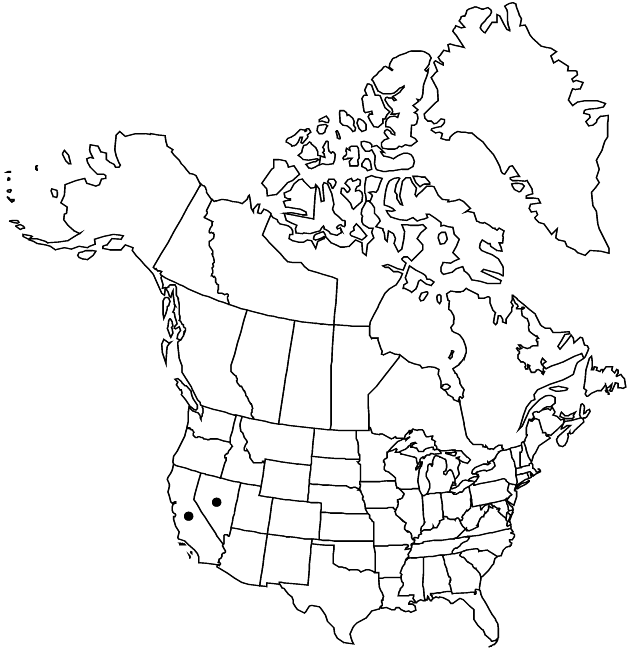Bahiopsis reticulata
Bot. J. Linn. Soc. 140: 72. 2002.
Common names: Death Valley goldeneye
Endemic
Basionym: Viguiera reticulata S. Watson Amer. Naturalist 7: 301. 1873
Shrubs, 50–150 cm. Leaves alternate or opposite; petioles 3.5–30 mm; blades broadly ovate, 2.8–9 × 2.3–6.5 cm, margins entire, faces: abaxial sericeous and glanddotted (and strongly reticulate, not shiny), adaxial sericeous (hair-bases slightly enlarged). Heads 3–9 (–25). Peduncles 0.5–5 cm. Involucres campanulate to hemispheric, 10–15 × 6–9 mm. Phyllaries 18–25, 2.5–5 × 1.2–2 mm. Paleae oblanceolate, 4–8 mm. Ray-florets 8–15; laminae 7–15 mm. Disc-florets 40+; corollas 3–5.5 mm. Cypselae 2.5–4 mm; pappi of 2 lacerate, aristate scales 1.5–2.8 mm and 2–6 lacerate scales 0.6–1 mm. 2n = 36.
Phenology: Flowering Mar–Jun.
Habitat: Xeric scrub, desert grottoes and canyons
Elevation: 600–1400 m
Discussion
Selected References
None.
Lower Taxa
None.
... more about "Bahiopsis reticulata"
sericeous +
sericeous +
introrse +
connate +
herbaceous +
scarious +
absent +
hirsute +
papillate +
thyrsiform +
continuous +
decurrent +
3-nerved +
ovate +
winged;ribbed;winged;ribbed +
1;15 +
stigmatic +
absent +
Death Valley goldeneye +
zygomorphic +
yellow +
monomorphic +
dimorphic +
strigose +
2.5mm;4mm +
staminate +
straight +
distinct +
proximal +
1;5 +
bisexual +
dispersed +
singly +
discoid +
singly +
indeterminate +
3;9 +
surrounding +
campanulate;hemispheric +
cauline +
triangular +
2-carpellate +
inferior +
attached +
anatropous +
oblanceolate +
persistent +
falling +
absent +
coroniform +
tough +
thick +
absent +
connate +
persistent +
distinct +
falling +
unequal +
Bot. J. Linn. Soc. +
2002 +
neuter +
absent +
sterile +
paleate +
convex +
fibrous +
exalbuminous +
modifed +
2;3 +
Endemic +
alternate +
branched +
continuous +
2-branched +
papillate +
Bahiopsis reticulata +
Bahiopsis +
species +
campanulate +
equaling +
shorter +
